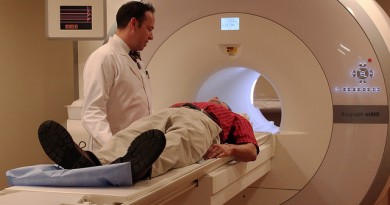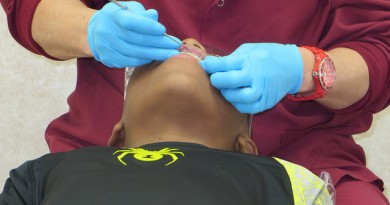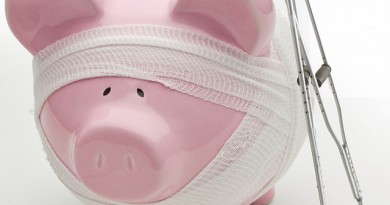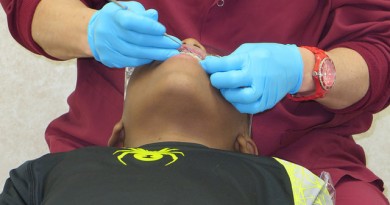How Much Does A Contact Lens Exam Cost?
A contact lens is a thin disk that can be placed on the eye to assist with improving vision, or as a cosmetic accessory. The acquisition of contact lenses requires a prescription that is only obtainable through an assessment by a trained and certified professional. Contact lens exam cost can range from $60 to approximately $150, depending on the particular professional, the location, and other variables. The cost of a contact lens exam may also include the fitting of the lenses to your eyes. This is a delicate process that is necessary to ensure the best possible fit, and a properly fitting contact lens is vital to ensuring that vision will actually be corrected. The cost of a contact lens exam may be covered by insurance if the assessment is for medical and/or corrective purposes, while the use of contact lenses for purely aesthetic reasons will almost never be part of an insurance plan.
Contact Lens Fitting Fee
Eye exams and contact lens exams are not exactly the same, leading to a difference between eye testing and contact lens exam cost. An assessment of vision usually includes chart reading of some type. Retinoscopy involves the dimming of light and the use of various lenses to determine if correction is needed, what is the cause (astigmatism for example), and the general amount of adjustment needed to achieve improved vision. If correction is required, the use of refraction will allow the professional to customize the prescription for your specific needs. The need for more specialized tests can lead to an increase in eye and contact lens exam cost.If the examiner wishes to closely examine the structures within the eye, they may perform a slit-lamp examination. The tool used for this assessment magnifies the inner eye for closer examination. Contact assessments have the same (or at least similar) elements as a comprehensive eye exam, but also include examinations concerned with the shape and size of of the cornea, pupil, and iris. An instrument known as a kerameter is used to measure the general size and curve of the eyeball. These measurements, along with questions regarding lifestyle and other types of questions, will help the optometrist or ophthalmologist to choose the most appropriate style and brand of contact lens for your specific needs.
Contact Lens Insurance
In the past, the popularity of glass contacts created a need for contact lens insurance to cover potential damage to the lenses. When the use of more flexible materials for contact lenses began in the early 1990’s, the cost of lenses began to steadily decline, and the need for glass contact lens insurance faded away. However, as the cost of the item decreased, contact lens exam cost became more significant. Today, insurance vision plans can help to lower the cost of a contact lens exam. Some types of insurance will cover almost the entirety of the exam fees, while others may cover a portion of the fees or a selection of the components in the exam (for example, it may cover everything but refraction tests). Contact lens exam cost will be different for people with different insurance plans, so it is important to clearly understand the terms of your vision coverage.
Free Contact Lens Exam
It is recommended that you have an eye exam done at least once a year. There are many programs available for situations where someone may not have the resources or insurance. However, the cost of a contact lens exam is not often included in these programs. Having contacts instead of glasses is often viewed as a cosmetic decision, and this attitude can be a factor in the availability of the resources needed to account for contact lens exam cost. As an alternative to finding a free contact lens exam, you may find programs that help you acquire the lenses for free. This can amount to substantial savings and is worth exploring in any situation.
Where To Get Contacts
Contact lenses can be obtained through many channels if you have a valid prescription. Before making a purchase, you will need to be aware of the kind of lenses that are suitable for your needs. Ideally, the examining doctor will provide you with this information at the end of your appointment, and they may include the price of a number of contact lenses in the total contact lens exam cost. Soft lenses are available that tend to be more comfortable due to their increased ability to reserve water. This type of lens also provides UV protection, and is usually easily disposed of after a prescribed period of use (sometimes daily). Another type of soft lens is made with silicon and can be left in the eyes for up to thirty days and nights. Downsides to soft lenses include their increased risk for absorbing foreign substances, and a tendency to tear easily. Rapid gas permeable hard lenses are firmer than soft lenses, are more durable, and are easier to care for. However, these hard lenses can cause serious damage to the eyes if their use is not properly regulated. You should discuss these options and others with your eye doctor, especially if it can be included in the contact lens exam cost.
Contact Lenses Without Prescription
The cost of a contact lens exam is significant, but not avoidable. It is highly unlikely that you will obtain contact lenses without a prescription. Like all prescribed medical aids, the distribution of contact lenses is regulated. It is not unlawful to purchase contact lenses without a prescription, but it is unlawful for a company in the United States, United Kingdom, or Canada to sell them without the proper documentation. Seeking to avoid contact lens exam costs, many people have discovered a loophole in the regulation of contact lens sales. The internet can be used to purchase contact lenses from countries where no prescription is required. This is a dangerous practice as the quality of lenses coming from these locations is highly suspect. Another attempt to circumvent contact lens exam cost is exemplified by companies that don’t require proof of your prescription, or will “request” it later. You should always be wary of companies that employ ethically questionable methods like these and it is advised that you avoid this type of practice especially as it comes at the cost of your own personal health.
- 770SHARES






